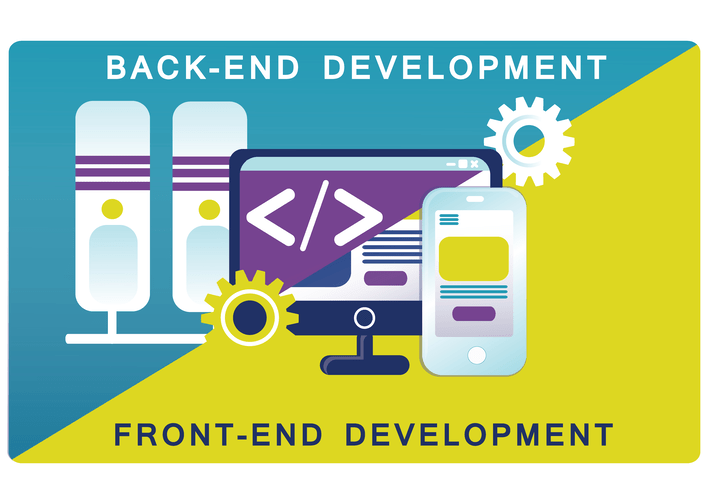Software development
What’s An Information Product And How Do You Build A Fantastic One?
Overcoming these hurdles requires strategic planning, organizational buy-in and investments in technology and talent. These domain teams share their data via APIs (Application Programming Interfaces), accompanied by comprehensive documentation, strong testing environments and clear efficiency indicators. His chart under reveals the time & value tradeoff of DaaP vs DaaS, which illustrates that DaaS provides specifically more worth, nevertheless it requires extra time. Of course, just memorizing a list of business analyst interview questions won’t make you an excellent enterprise analyst however it might simply help you get that next job. Typically, one of the best source for such information is the Consume Layer of a data lake or information lakehouse, although different architectures additionally exist.

Before your group even writes a single line of code, you’ve got to begin out by validating your product thought first. Data observability does the dirty work of figuring out the anomalies, so your small business can proceed to leverage and praise the shiny insights your information provides. Setting baseline metrics in your data will assist quantify the influence of your knowledge initiatives over time. Just ensure these metrics are utilized persistently across use cases, notably when you have a central knowledge platform. In a conversation with the Monte Carlo team, Atul Gupte, former Product Manager for Uber’s Data Platform Team, goes a step additional and describes the function of an information product manager. With better tooling, more diverse roles, and a clearer understanding of data’s full potential, many businesses have come to view the entire ecosystem as a fully shaped factor of the corporate tech stack.
Check In To View Extra Content Material
In this sense, information mesh describes a new enterprise paradigm that emphasizes knowledge decentralization over conventional ETL centralization. Their ease of access is certainly one of their defining characteristics, and access to the data product should offer you all the knowledge you need to achieve insights. This “data as a project” approach has some major drawbacks, together with slow time-to-delivery, lack of reuse, rigidity, and threat of delivering mistaken, and/or incomplete knowledge. The knowledge product must be compatible with other information products and techniques, allowing for seamless integration. Being interoperable implies that different data merchandise can work collectively and talk to each other with none problems.
Data marts had been built to reply very particular enterprise area questions, so that they absolutely have to be a data product right? Data marts, knowledge warehouses, data lakes, and lake homes are data administration platforms as opposed to being a knowledge product. Traditionally, an information mart is an IT deliverable that arrives after a protracted and tedious information warehouse build, at which time business wants might have already changed. If the product administration strategy have been to be utilized to a knowledge mart, then it can be used to develop data products. In addition, an information mart product should be agile and assist numerous modes of visualization, advanced analytics, and query engines.
Upcoming Stay Webinars
By taking a product administration mindset, nevertheless, one can be certain that the analytics being created will have actual value for the business and its users. Data as a product, on the other hand, is a mindset that mixes instruments and strategy to treat knowledge as a product consumed by inner customers (in-house staff). The “product” ought to include such features as discoverability, explorability, understandability, safety, and trustworthiness. For instance, a company might https://www.globalcloudteam.com/ package and promote data units that present insights into consumer conduct, market tendencies, or economic indicators to help handle manufacturing, inventory, or logistics. Another company might have information that incorporates data relating to consumer demographics and product preferences to assist organizations build products which have worth to the general public shopper.
Managing information as a product requires applying the appropriate product management principles. To perceive the difference between these two very different phrases, we want to begin by looking on the targets and implications that information products Data as a Product and data-as-a-product options have on a company. When it comes to great product design, I like to say that once you’ve got the sausage, it’s time to bring the sizzle. Your branding, your design language, your composition—that all must be in your data product.

Making these high quality checks accessible for every dataset goes a great distance for helping customers understand the info. They are simple to locate, perceive, and use, and are constant in meeting our expectations. A particular person, or team, made decisions that maximized the simple use of those products, offered a trustworthy delivery system, and delivered top quality (or no much less than affordable quality). By viewing information as a product, you possibly can see the info as one thing that can be improved upon. Data turns into something needing improvements to satisfy your client base. The aim of a “data as a product” philosophy is to offer high-quality, trustworthy data that is simple to access and work with.
For instance, a advertising staff might use a knowledge product to analyze buyer habits and develop targeted advertising campaigns. Similarly, a logistics staff makes use of information products to optimize stock ranges and enhance supply occasions. Depending on the use case, there are a variety of information merchandise out there to pick and select from. ThoughtSpot Embedded empowers product builders to create engaging, interactive experiences that get to market much faster than a home-grown feature set. You can use ThoughtSpot Embedded to embed AI-Powered Analytics in your knowledge merchandise to give your customers a stay, intuitive natural language search experience mixed with AI and free-form data exploration. Plus, you get done-for-you analytics companies, sturdy APIs, and interactive developer resources your staff will love.
Conceptualize The Thought
A knowledge mesh structure shifts knowledge strategy to a federated knowledge network. It provides business domains the autonomy and instruments to create knowledge merchandise for his or her wants, and creates a typical framework for building, and scaling, product-driven information solutions, in real time. Data-as-a-Product (DaaP) is an method in data management and analytics where knowledge sets are handled as standalone products designed, constructed and maintained with the end consumer in mind. This idea involves making use of product administration ideas to the lifecycle of information, emphasizing quality, usability and consumer satisfaction.
Data products should be priceless on their very own as a outcome of if they are not, people will not use them. Just having information isn’t sufficient – it wants to offer real value to the consumer. This worth might come in the form of insights, data, or solutions to problems.
- Too many product managers fall into the trap of thinking, “If we build it, they may come.” That’s rarely true and as a rule, a recipe for failure.
- To make data extra useful inside a company, it is important that information units are easy to search out, trustworthy and might work well with different knowledge.
- The “product” should embrace such options as discoverability, explorability, understandability, safety, and trustworthiness.
- Managing privacy and security dangers may be achieved by implementing a couple of key strategies.
- Domain knowledge groups should apply product thinking […] to the datasets that they supply; considering their data property as their products and the relaxation of the organization’s knowledge scientists, ML and information engineers as their clients.
- For the previous few decades, most corporations have saved information in an organizational silo.
Businesses have to repeatedly evolve their demand planning course of to use probably the most correct metrics – and make positive that the metrics are reliable and prime quality. Any error must be fastened promptly to attenuate the impact on downstream consumers. To meet this requirement, they would need unified evaluation of historic data, streaming transactional information, and predictive analysis. The information producer, the advertising department in this case, is responsible for not solely providing the info but in addition entry management policies that adhere to the relevant regulatory compliances and the APIs or the GUI.
Understanding how knowledge products participate in the apply of data-as-a-product helps situate and contextualize them inside other features that also share this way of thinking. A knowledge product is a reusable data asset, engineered to ship a trusted dataset for a particular purpose. It integrates information from relevant supply techniques, processes the information, ensures that it’s compliant, and makes it immediately accessible to anyone with the proper credentials.

DaaP transforms raw data right into a structured, accessible and priceless product. Analogous to refining oil into gas, when processed properly data unlocks value. This shift encourages organizations to view their accumulated data—spanning many years of documentation and digital records—as a rich repository of insights important for strategic decision-making and buyer engagement. Moving away from groups aligned to archetypes or talent units, to small product-oriented teams with tightly centered targets is one method to get there.
By beginning with better conceptualization and presentation, it strives to offer an distinctive Data Experience. While we’ll explore this approach in additional element later, the key takeaway is that treating knowledge like a product means putting information shoppers first. If, in the more conventional mindset, initiatives end as soon as a dataset or report is delivered, product pondering requires groups to retain ownership over a data product for its complete lifecycle. That means data product house owners are liable for evolving and adapting the information product to ensure it continues to meet the needs of the shopper whilst their requirements change.
Both ideas, however, relaxation on a shared foundation of data administration and governance, with the last word objective of maximizing the intrinsic value of knowledge. Creating a tradition where learning from failure is embraced and celebrated can be critical to the success of developing efficient information products. Finding what doesn’t work, or where friction points lie, allows teams to regulate their pondering and approach for future initiatives – and continually enhance merchandise and buyer experience alongside the means in which. That’s why it’s so crucial to begin by understanding who your buyer is and what’s most precious to them.
It includes accumulating, processing, analyzing, and presenting information in a useful and actionable format. Examples of information products include analytics dashboards, suggestion engines, data visualizations, and predictive models. Different corporations will require distinct approaches depending on their measurement and enterprise needs, however many data leaders we’ve talked to have found the most effective outcomes with a hub and spoke mannequin. In this construction, a centralized data platform group handles infrastructure and data high quality, whereas decentralized, embedded analysts and engineers take care of semantic layers and apply data to the enterprise. This mannequin works nicely in case your organization is growing quick and needs to move shortly, but can result in duplication and repeated efforts on the embedded analysts’ part with out strong alignment with the centralized information group.